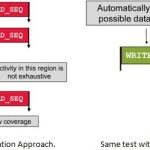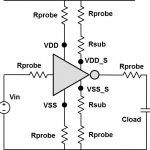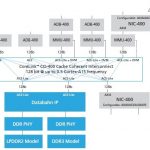You are currently viewing SemiWiki as a guest which gives you limited access to the site. To view blog comments and experience other SemiWiki features you must be a registered member. Registration is fast, simple, and absolutely free so please,
join our community today!
Sonics have been building networks-on-chips (NoCs) for a long time and have amassed a rich patent portfolio. So being granted a new one isn’t usually deemed press-release-worthy. However, their latest patent on power management is pretty significant. It is patent 8,601,288 titled “Intelligent Power Controller”.
Historically… Read More
Happy Birthday Xilinxby Luke Miller on 02-14-2014 at 4:00 pmCategories: FPGA, Xilinx
I have never done this before, wished a company happy birthday. So here goes, Happy Birthday Xilinx! How does it feel to be 30? Looking good eh? Signing up for AARP? My family and I just sang and had cake and ice cream. They did look at me like I was nuts when I set a place at the table for a Xilinx FPGA. In all seriousness, over the years Xilinx… Read More
Will Google Design Server SoCs?by Beth Martin on 02-13-2014 at 12:22 pmCategories: Uncategorized
Google is search, of course, but it is also OS (Android), systems (Glass) and increasingly, maybe, hardware. Rumors are swirling that through careful acquisitions and focused internal development, Google is set to make its own server SoCs.
Google’s Larry Page has stated that they are in the hardware business. They’ve been making… Read More
In the current decade of SoCs, semiconductor design size and complexity has grown by unprecedented scale in terms of gate density, number of IPs, memory blocks, analog and digital content and so on; and yet expected to increase further by many folds. Given that level of design, it’s imperative that SoC verification challenge has… Read More
We know the science fiction plot device from its numerous uses: in order to survive a journey of bazillions of miles across galaxies into the unknown future, astronauts are placed into cryogenic stasis. Literally frozen in time, the idea is they exit a lengthy suspension without aging, ready to go to work immediately on revival … Read More
Often it is considered safer to be pessimistic in estimating IR-drop to maintain power integrity of semiconductor designs; however that leads to the use of extra buffering and routing resources which may not be necessary. In modern high speed, high density SoCs having multiple blocks, memories, analog IPs with different functionalities… Read More
Networks-on-chip (NoCs) are very configurable, arguably the most configurable piece of IP that you can put on a chip. The only thing that comes close are highly configurable extensible VLIW processors such as those from Tensilica (Cadence), ARC (Synopsys) and CEVA but Sonics would argue their NoCs are even more flexible. But … Read More
There were a number of trends discernible at CES this year, one of the big ones being wearables, especially in the medical and fitness areas. I wear a FitBit Flex and I have, but rarely wear, a Pebble Watch that links to my iPhone. I would say that at this point they are promising but are more gimmicks than truly useful. My Fitbit measures… Read More
SoCs face a lot of issues related to security and the Network-on-Chip (NoC) is in a good position to facilitate system-wide services. SoCs are now so complex that one of the challenges is to make sure that the chip does what it is meant to do and doesn’t do what it isn’t meant to do. Just as in software, security used to be … Read More
Now a day, a SoC can be highly complex, having 100s of IPs performing various functionalities along with multi-core CPUs on it. Managing power, performance and area of the overall semiconductor design in the SoC becomes an extremely challenging task. Even if the IPs and various design blocks are highly optimized within themselves,… Read More





